Saturday May 5, started off ordinary, as ordinary as a Saturday on an icebreaker in the middle of the Bering Sea can be. I was lingering over lunch with Gavin Brady and Dr. Michael Cameron, two members of the NOAA NMML ice seal team. They were telling leopard seal stories and fun factoids about other seals. Unfortunately, I had to excuse myself, as it was time for me to make an ice observation up on the bridge.
In that very short period of time that it took me to lumber up the five flights to the bridge of the Healy, something happened. We were stopped at a station, a ribbon seal had been recorded close to the ship, and the ice seal team was going to try and tag it.
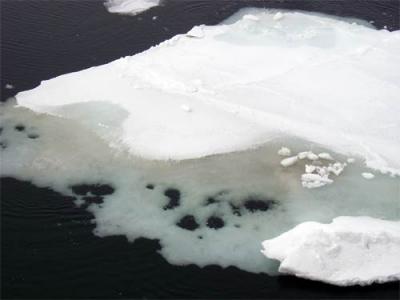
I stopped right smack dab in the middle of my observations and flew down three flights to the hanger, where the seal team was hastily putting on their zodiac safety gear. Our last week on the Healy had us in rotting ice, or fog, or no ice at all with few opportunities to tag ice seals. This was a golden opportunity, as the boat was stopped and on station. Zodiacs away!
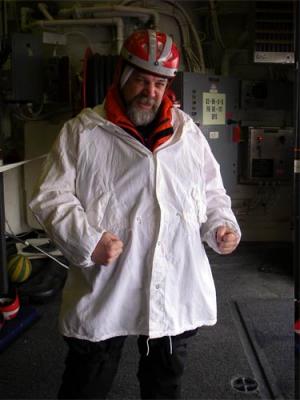
Permission was granted and the seal team was good to go.
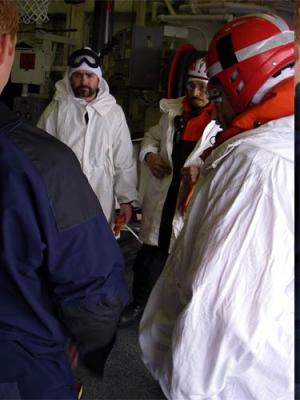
They met together, refreshed their netting strategy, and waited.
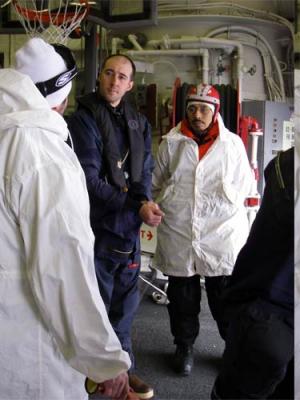
The Coast Guard worked as quickly as it was able to.
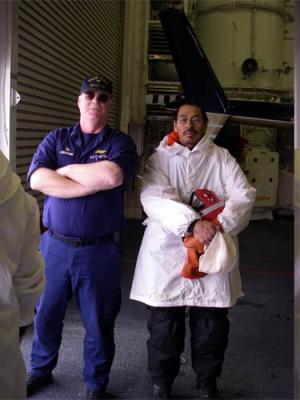
This was only the second time these zodiacs were launched; the crew was working out protocol and safety procedures.
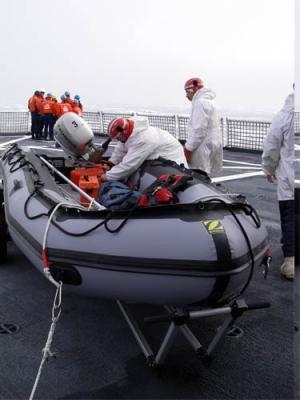
Time ticked, ticked, ticked away.
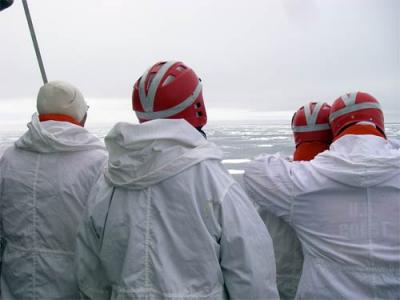
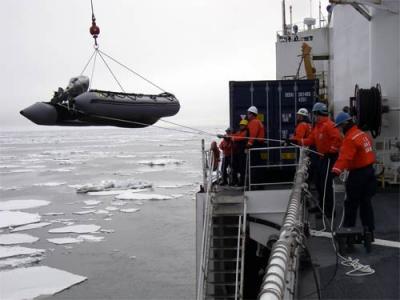
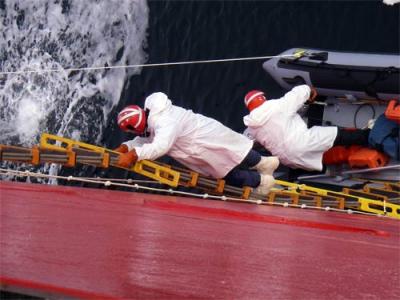
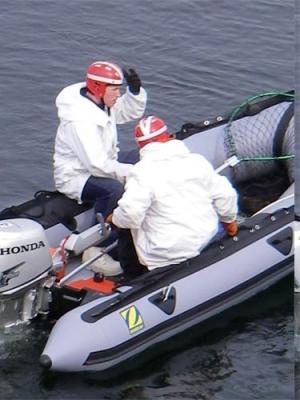
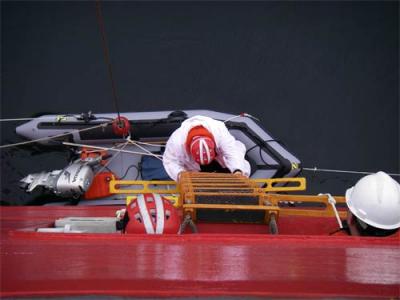
Bunny boots make the steps down a little more interesting.
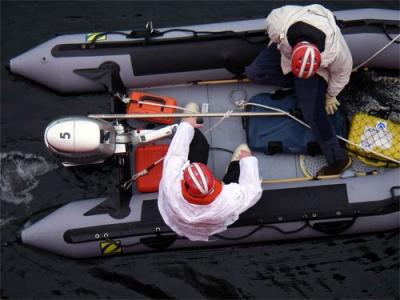
Gavin Brady with driver Jay Ver Hoef descended the Jacobs ladder into the zodiacs below. They chugged off into the frosty fog, and were gone.
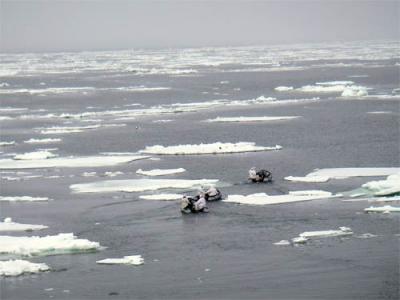
They had radios, GPSA Global Positioning System (GPS) is a satellite-based navigation system used to track the location or position of objects on the Earth’s surface. and other contact equipment. We knew they would be safe.
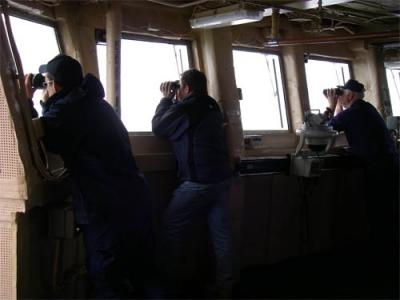
The rest of the seal tagging was done within a quiet and serene ice flowscape.
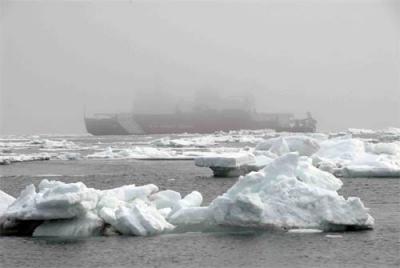
The three boats split up and surrounded the ice piece upon which the ribbon seal reclined. Sean Dahle and Gavin Brady quickly took control of the animal, it was a juvenile male.
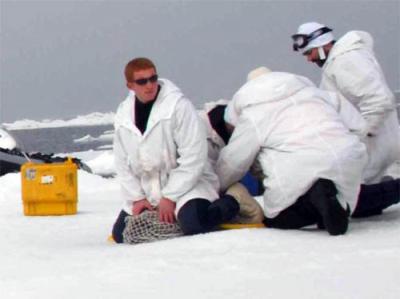
The rest of the team measured its weight, some blood, it’s length, sex and attached the flipper tag.
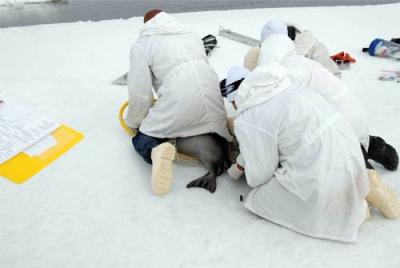
Ribbon seals are willing subjects. They are true ice seals; they never touch land and rarely encounter humans. Because of their naivety of humans, they can often be approached more easily than other arctic species.
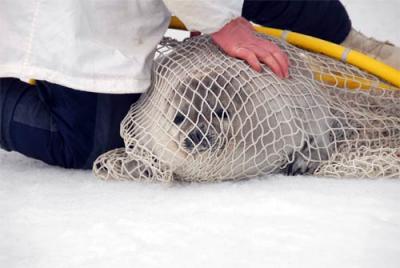
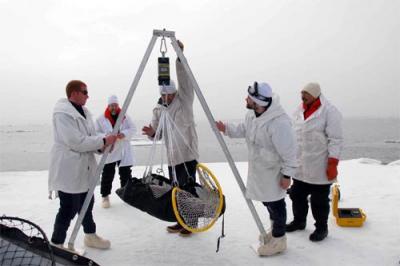
This young male was true to its breed.
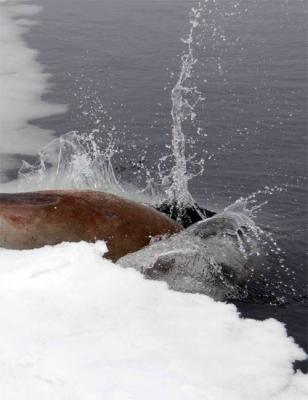
So tagging number two can go down in the ice seal journal and in the event log of the 0701 Healy Science cruise as uber successful. Ordinary days? There are none, when you are on an icebreaker somewhere the middle of the Bering Sea!


Comments